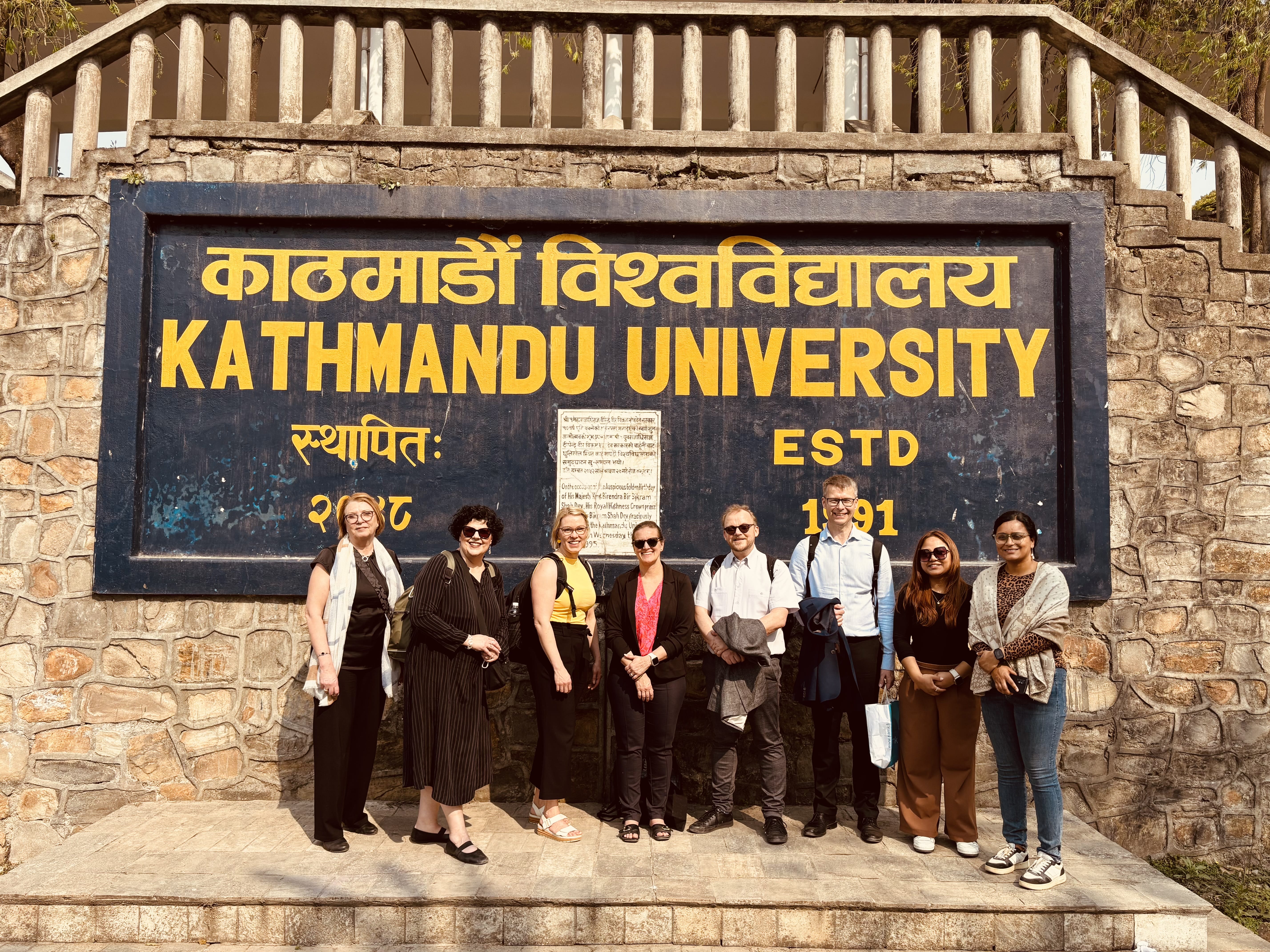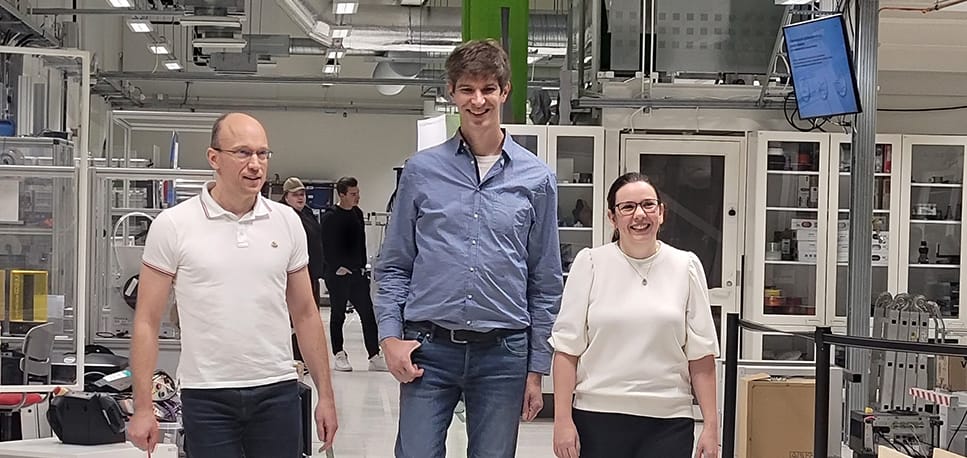SAMK and Satasairaala (Satakunta Central Hospital) are developing the hospital of the future together through research and testing
SAMK and Satasairaala are implementing a three-year project, Future Hospital as a Platform for Innovation, which has received more than half a million euros from the European Regional Development Fund.

Ermo Haavisto, Chairman of Satakunta Hospital District, chairs the project steering group. Anu Holm, Adjunct Professor, leads the Artificial Intelligence Research Group at SAMK.
-Technological development and digitalization are increasingly affecting social and welfare services as well and require a safe development and testing environment, says Anu Holm, Project Manager and Head of SAMK’s Artificial Intelligence Research Group. Her background is a hospital physicist and Adjunct Professor in medical physics.
The ongoing project combines SAMK’s RoboAI laboratory with the facility under construction at Satasairaala, and creates an innovation platform and a permanent collaboration and operation model for health technology development.
-The key to the innovation platform is the knowledge pool of R&D and the physical space where health technology methods can be tested and piloted, Anu Holm tells us
University hospitals have had similar types of test environments, but now the intention is to bring the practice into a central hospital environment.
– At the same time, we can utilize local know-how and provide opportunities for the local experts. Health technology companies can come to develop and test products in a test environment to be built at Satasairaala. This will also develop into a mutual place for the researchers of SAMK and the hospital.
Information pool and new treatment methods
One of the most important projects to be launched on the innovation platform is the joint information pool of Vaasa Central Hospital, Satasairaala and Turku University Central Hospital, which means utilizing patient information resources related to illnesses and their treatment in a remote data-safe environment.
– The co-operation partner is Auria Information Service, which consolidates decades of data, from thousands of patients, into one repository. This is made possible by the Act on the Secondary Use of Health and Social Data, entered into force in May 2019, which will improve the conditions for research and innovation on citizens’ health, disease prevention and the development of new treatments.
Anu Holm gives an example of medicine development.
– The database provides information on the effects of different medicines on patients, which may reduce drug testing with humans. Or, it provides information on how a change in treatment affects healing. At the same time, comparisons can be made between different hospitals to highlight best practices.
Another example of the pilots is the simulation of provincial social and healthcare services.
– Here we are working with Satakunta Hospital District’s and SITRA’s (The Finnish Innovation Fund) co-funded project, Satakunta Welfare Analyst, to identify service pathways for elderly emergency patients. The aim is to better identify the care needs of people at the emergency and to see what skills or equipment are needed more.
One of the pilots is the Exoskeleton Rehabilitation Robot, which is used to support walking training. We examine, among other things, in co-operation with the rehabilitation units of Satakunta Hospital District, what happens in robot rehabilitation and how the development of rehabilitation can be monitored objectively. The purpose is to measure the relationship between muscle and brain function.
The project participates in the piloting of a health clinic in Pori for the 75-year-old
Porin perusturva (Pori Basic Security Centre) has invited all persons over 75 years of age to undergo a medical examination to identify latent health problems, which could be addressed early enough. On selected metrics, those exceeding a certain score will be referred for further examination and appropriate actions.
-We went to help them choose the appropriate metrics, organize the recording of data, and visualize the information they accumulate in a way that will benefit further operational development, Anu Holm says.
In the future, remote sensing from home could be introduced to identify different risk groups.
– Post-operative home monitoring or, for example, sleep and weight monitoring could be tested with different devices, if the patient agrees. Where possible, we would have local partners in the development of the equipment and the students could assist in testing the equipment.
The risks associated with the use of medicines for the elderly could be identified and monitored by machine intelligence.
– The basic idea behind the innovation platform is that the challenge comes from the organization and we come along to solve issues, Anu Holm sums up.
– All the work seeks to influence the care of the individual, but through the improvement of care paths, the whole health care.
Ermo Haavisto emphasizes a safe culture of experimentation and staff involvement
Ermo Haavisto, Director of Satakunta Hospital District, chairs the steering group of the project Future Hospital as an Innovation Platform.
Haavisto finds the project interesting and important, because it implements an exploring experimental culture and helps to find solutions for developing the activities. For example, artificial intelligence and robotics can be safely tested in a test environment before being advanced to product development or practice.
– The model is very good because it combines strongly the expertise of different actors. We put our heads together to try new ways of doing things. Otherwise, we would have to move forward in real life and through a longer formula.
Haavisto emphasizes developing his own work in an organization of 3800 people.
– We all have two jobs: our own work and development of our own work. This kind of innovation is inherent in the work of Satasairaala staff. We have the opportunity to allocate the resources needed for this.
One of the challenges of working life is the involvement of the staff and its realization in practice.
– Involving professionals in innovation and to experiment, innovate and test in a virtual environment is particularly important. It helps to put new methods into practice, Haavisto says.
Digitalization as a whole affects both technology and operating models. Not all opportunities are known yet, all the doors have not been opened.
– Digitalization makes it possible to do things in another way and in a more productive way. In many places, it means a radical renewal of traditional operating models and a change in the operating culture. One example is that the patient can become more involved in planning and implementing one’s own care, and is thus more responsible for his/her own well-being.
Electronic services, data management and management by information are all one big digitalization, where the best methods must be chosen from. It requires a test platform like the Future Hospital, Haavisto sums up.


